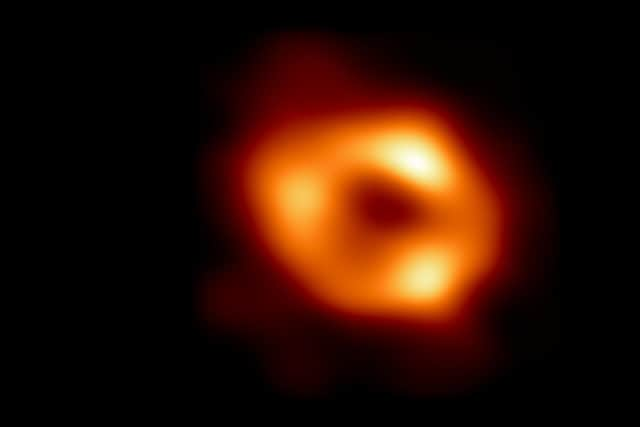Black holes: First image of Sagittarius A* at centre of Milky Way galaxy can help advance our understanding of nature – Dr Juan Hernández Santisteban
They are objects where matter has been squeezed into a small region of space, so dense that their gravitational pull prevents anything from leaving, including light which travels at the fastest possible speed.
Thus, it is no surprise that black holes make recurrent cameos in pop-culture imagery, and their extreme nature also provides a sense of wonder and curiosity even to seasoned astronomers.
Advertisement
Hide AdAdvertisement
Hide AdHowever, black holes are not just popular or academic curiosities. It is no secret our modern way of life relies on knowledge about how nature works at its most fundamental level, which underpins the marvels of everyday technology.
We, as humanity, have come a long way to create a deep understanding of the laws of nature and yet, this knowledge is still incomplete. We are in dire need of further experiments to reveal the gaps in our theories and solve long-standing mysteries, such as dark matter.
Black holes might be the key. They provide unique laboratories to test one of the fundamental forces of nature: gravity. They provide the most extreme test of gravity, out of reach of any current, or future, terrestrial experiments.
This is of primary importance because, more often than not, it is at the extremes of nature where cracks in our understanding of the physical world appear and stimulate new paths forward.


Unfortunately, despite their frequent appearance in films, “observing” black holes is incredibly difficult. They are astronomically compact objects, located at very large distances, preventing us from directly taking a picture.
For years, we relied on indirect measurements from either stars or gas swirling around them to obtain information about black holes. It is not surprising then that it took over 50 years after their prediction to provide concrete evidence of their existence.
Just last week, the Event Horizon Telescope collaboration revealed the first image of a supermassive black hole, called Sagittarius A*, at the centre of our galaxy, the Milky Way.
The EHT used the combined power of nine radio telescopes, scattered around the world to create a “virtual” telescope the size of our planet. By cross-referencing the signals from each telescope, it allows observations with an unprecedented resolution. This creative solution allowed astronomers to peer into the unknown and resolve, for the very first time, the shadow created by our “own” supermassive black hole’s event horizon.
Advertisement
Hide AdAdvertisement
Hide AdThe image confirms, on top of the mounting evidence from indirect measurements, decades-long efforts to reveal the true nature of the object at the centre of our galaxy. It is easy to forget that the 2020 Nobel Prize for physics was awarded for “the discovery of a supermassive compact object at the centre of our galaxy”, avoiding the term “black hole”.
The image of Sagittarius A* is a remarkable achievement that proves our best theory of gravity works even at these extreme limits, at least for now. Upcoming experiments, searching for gravitational waves, new X-ray space telescopes and more EHT images, will provide additional constraints and might reveal the gaps in our knowledge we desperately seek.
Ironically, it might be that the darkest of all cosmic objects will shed new light on our understanding of nature.
Dr Juan Hernández Santisteban is an astronomer at University of St Andrews
Comments
Want to join the conversation? Please or to comment on this article.
